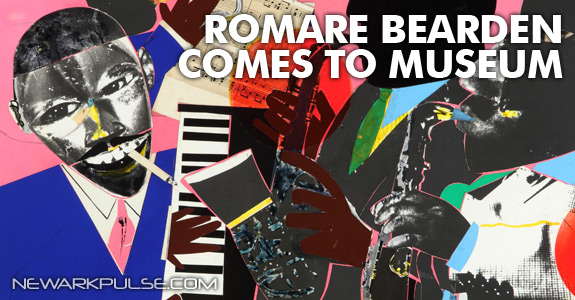Romare Bearden
As a child growing up in our "arts-dominant" city in the 1980s, there are many artistic references, which I can recall as being part of my "home curriculum." My parents tried to fill the house with the classics. Sure, there was Miles, 'Trane, Stevie, Mahalia, Ray, Otis, Al, BB, Berry, Muddy, Sarah, MJ, to name a few. We watched Spike, Pryor, Poitier, Cosby, and even Murphy. There were parties to watch Tyson, Jordan, Hagler/Hearns/Sugar, Doc/Strawberry, and Bo, in all of their athletic artistry.
But the visual arts, of the non-motion picture variety, too often go missing. There are no posters in your local poster shop carrying Gordon Parks' iconic shots. There are no Ikea mountings of Basquiat. Just as Carlos Santana is more readily available than Frida Kahlo, traditional paintings and are just not as prevalent as other mediums, which are more amenable to pop culture transferability. The message, however, can be just as or more powerful and beautiful.
Thus the value of our museums and galleries. Starting on May 23rd, the Newark Museum will be featuring one of our nation's greatest artists, Romare Bearden.
Birthed of the Harlem Renaissance and true student of the world, Bearden is mostly known for his collages and paintings, and was also a remarkable cartoonist, author, and philanthropist of the arts & youth.
Romare Bearden: Southern Recollections is an exhibition of works assembled from both private and public collections, which "highlights Bearden's mastery of collage as well as his development of narrative and thematic explorations of his native South," according to the Romare Bearden Foundation. The tour of the exhibit is intended to mark the centennial celebration of the artist's birth.
I, for one, can't wait to experience the classics. Word to those past days of Hal Jackson's playlist on Sundays after church.
ABOUT BEARDEN
Romare Bearden lived in Charlotte's Mecklenburg County until the age of four. Although his family settled in New York, the artist's brief childhood in the South and return visits to Charlotte made a noteworthy impact on his art. During these visits, Bearden absorbed stories and observations about the rituals of daily Southern life"”the relentless toil of crop cultivation, women tending gardens and mixing herbal remedies, fish fries, and other community gatherings, and religious activities. These experiences, as well as stories passed from generation to generation left a lasting impression on him.
His life and art are marked by exceptional talent, encompassing a broad range of intellectual and scholarly interests, including music, performing arts, history, literature, and world art. Bearden was also a celebrated humanist, as demonstrated by his longtime support of young, emerging artists. Bearden began college at Lincoln University, transferred to Boston University, and completed his studies at New York University (NYU), graduating with a degree in education. While at NYU, Bearden took extensive courses in art and was a lead cartoonist and subsequent art editor for the monthly journal The Medley. He had also been art director of Beanpot, the student humor magazine of Boston University. Bearden published many journal covers during his university years and the first of numerous texts he would write on social and artistic issues. He also attended the Art Students League in New York and the Sorbonne in Paris. From 1935 - 1937, Bearden was a weekly editorial cartoonist for the Baltimore Afro-American.
After joining the Harlem Artists Guild in 1935, Bearden embarked on his lifelong study of art, gathering inspiration from Western masters ranging from Duccio, Giotto, and de Hooch to Cezanne, Picasso, and Matisse, as well as from African art (particularly sculpture, masks and textiles), Byzantine mosaics, Japanese prints, and Chinese landscape paintings. From the mid-1930s through the 1960s, Bearden was a social worker with the New York City Department of Social Services, working on his art at night and on weekends. His success as an artist was recognized with his first solo exhibition in Harlem in 1940 and his first solo show in Washington, D.C., in 1944. Bearden was a prolific artist whose works were exhibited during his lifetime throughout the United States and Europe. His collages, watercolors, oils, photomontages and prints are imbued with visual metaphors from his past in Mecklenburg County, Pittsburgh and Harlem, and from a variety of historical, literary, and musical sources. Bearden died in 1988.



